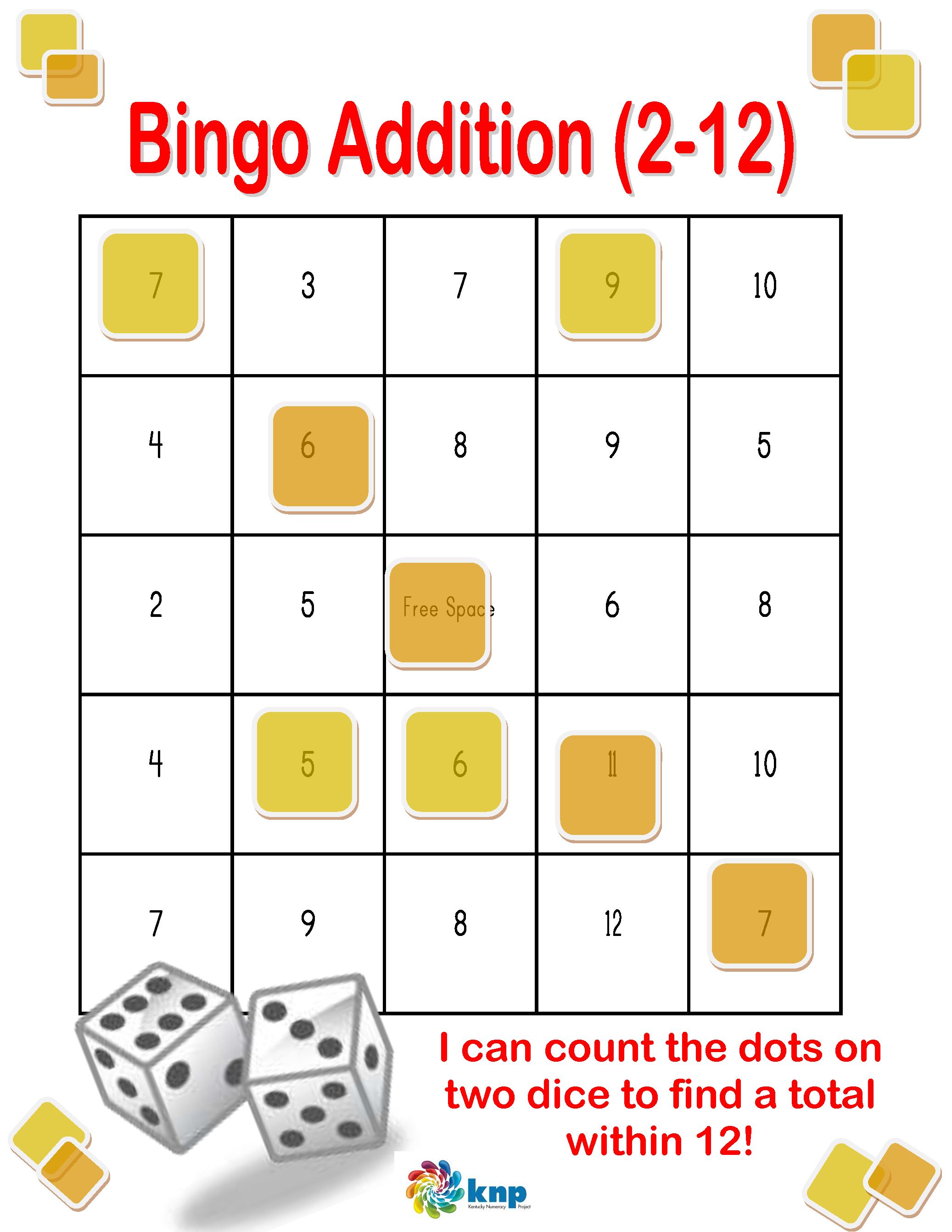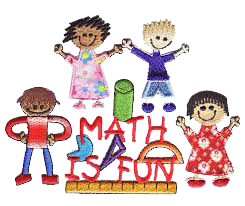“Bingo Addition”
KNPIG ID #A 3321.1
What's this activity about?
Bingo is a game that everyone can enjoy! This version, however, is a fun way to help kids learn simple addition using the numbers 1-6. Having lots of practice adding these numbers together in different combinations is a great way for kids to begin “internalizing” these facts. Instead of working problems with numbers only, such as 4 + 3 =?, they can use the dots on the dice to help them see that 7 can be broken into a group of 4 and a group of 3! This version of Bingo is a fun way to spend time with an important child in your life while also helping him or her learn basic addition facts. Enjoy!
What materials do we need?
Bingo Boards, bingo covers, two dice with sides 1 to 6.

How do we play?
Each player gets a bingo board and covers. Players should take turns rolling the dice, finding the total number of dots, and covering the total on their own board. The first player to get 5 in a row wins!
Where’s the Math?
There is a lot of math in this game that goes along with what kids are learning in school. The dice are helping kids see addition through objects and pictures (the dots). Kids are also seeing ways to break numbers into pairs in more than one way, while also becoming better at being able to add and subtract within 12. As kids start to internalize these simple facts, they will also begin to develop different strategies for addition, such as counting on; making tens, using the relationship between addition and subtraction, and using number combinations they know to help figure out combinations that they don’t know.
Things to Think About:
As you play this with kids, remember to BE PATIENT. Sometimes it’s hard to not to help them along if they are having a hard time figuring out the total number of dots without having to count each dot, even though they may have rolled the exact same combination many times before. Instead of telling them the answer, ask questions that will help them get to the answer on their own. Try asking “is there another way you could find the total without counting each dot? What if I put my hand over one of the dice – what do you think the total would be?” rather than just telling them the answer. When kids are given the chance to figure things out on their own, they gain a deeper understanding of whatever we are trying to help them learn!
When first playing Bingo Addition, allow your child to count the dots as many times as they need to find the total. After you’ve played the game several times, begin to talk about the combinations as you go along (“I rolled a 5 and a 3. I wonder what number I’m going to get to cover.”). As your child begins to start remembering several combinations, try covering the dice with your hand about 5 seconds after he/she rolls and ask them to figure out the total, and then uncovering the dice so he/she can check the total. Later, randomly ask your child questions about what numbers go together to make other numbers – “I was thinking about the game we played the other day – what was the total when I rolled a 5 and 6? -OR- Do you remember what dice we rolled to get a total of 8?”
Feedback
Send us your thoughts and ideas about these activities. Email the KCM

